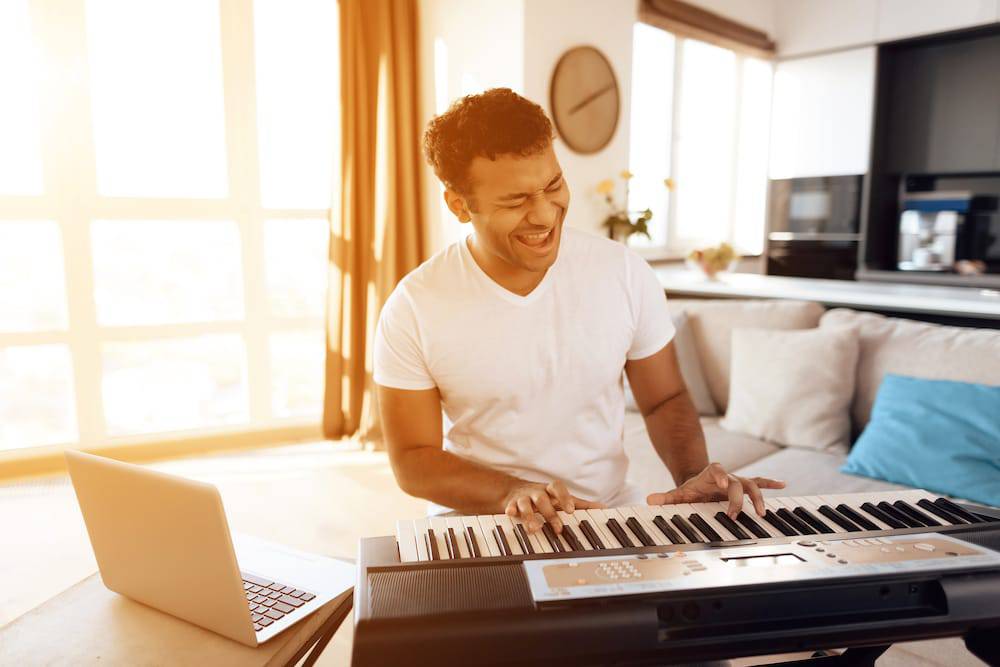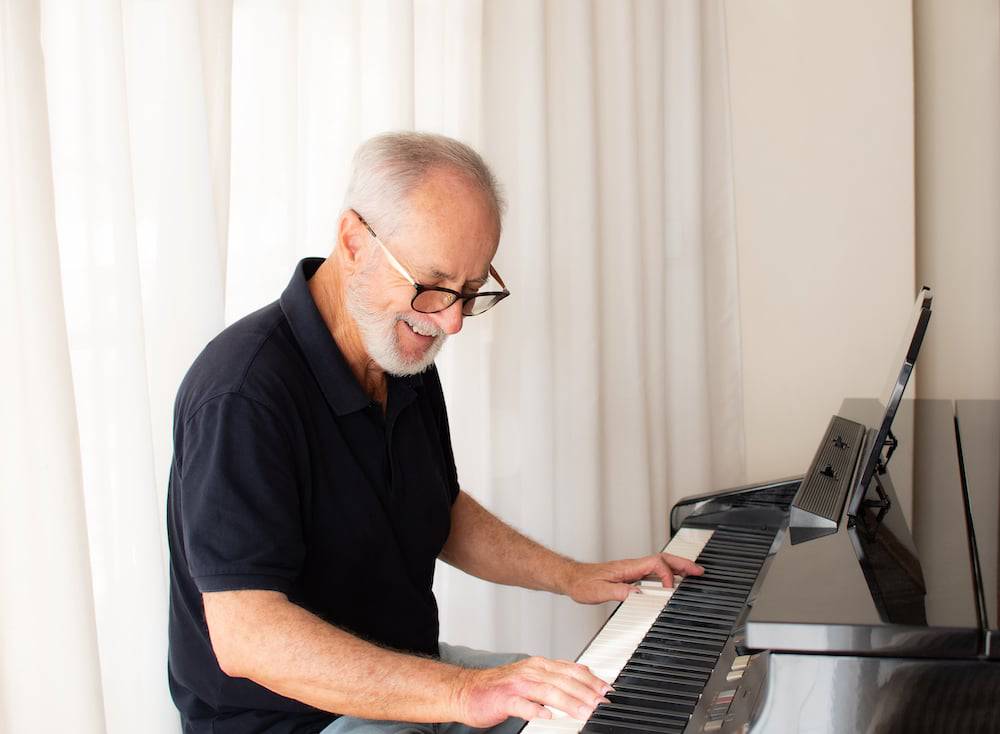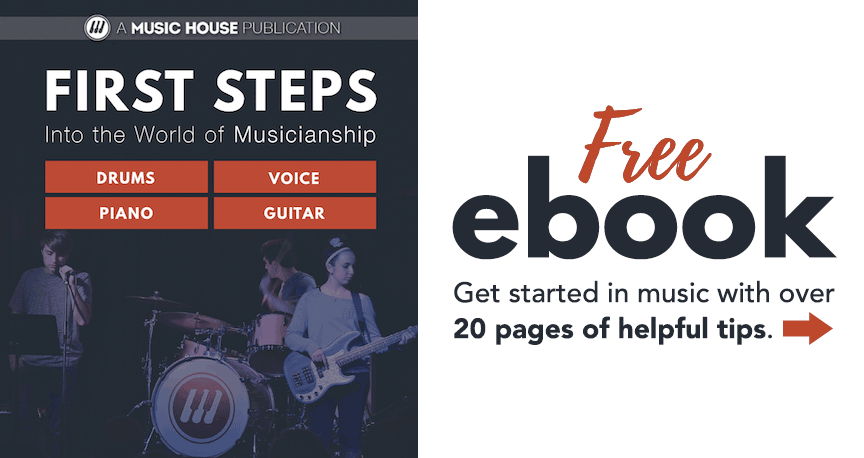A Quick Guide to Relearning the Piano After Taking a Long Hiatus

Sometimes, as musicians, we end up taking breaks away from our chosen instrument. Depending on the circumstances, some of these are longer than others, spanning just a few months or lasting even a few years. Reasonings for this might vary. For example, maybe you once did piano lessons as a child but fell out of interest as a teen. Or maybe an injury, such as a sprained wrist, caused you to shift your focus into something else. Either way, it is perfectly normal and the good news is that picking up where you left off isn’t as difficult as you might think!
If you have been considering taking virtual piano lessons, perhaps maybe it was even a new year’s resolution, now is the perfect time to get started! It is not too late to relearn the piano, and here at Music House, we would like to offer you a quick guide on what that looks like.
1.) Take Baby Steps
If you’ve taken a long hiatus from playing the piano, it is normal that your dexterity, skill, and strength have all waned over time. However, it is important not to get discouraged! It is highly unlikely that you will be able to sit down and masterfully play as you once did. Keep your enthusiasm high as you retrain your fingers, hands, and feet. Focus on posture and muscle memory, making sure you still have a good grasp of the fundamentals.
When starting off, don’t delve into the habit of over practicing. Shoot for about 20 minutes a day, at least for the first week. Then, build your way up from there. If you are taking either in person or virtual piano lessons, talk with your instructor to see what they personally recommend for your current skill level. They will be glad to provide guidance on when and where to increase the difficulty level of your exercises.
2.) Properly Stretch and Warmup
Any good musician knows that properly stretching and warming up isn’t reserved solely for athletes preparing to practice or compete - it is a concept applied to musicians as well. Work through scales and arpeggios to help warm up any slow or sluggish fingers. Pay close attention to ensure that you are getting the correct finger progressions and key signatures. As you continue to warm up, you can add other, more layered elements, such as staccato, thirds, sixths and octaves.
Just be mindful that you might now have all the stretch and strength that you once had, so you will want to avoid overreaching. Work your way up to it and make it something that you can look forward to!
After each practice session, cool down, stretch your hands and fingers, and massage away any cramps or lingering tension.
3.) Posture is Key
Even if you’ve spent years away from the perch behind the piano, rest assured that one thing hasn’t changed: posture. Unfortunately, computers have caused our posture, as a society, to worsen. We have become people who slump and slouch so much more often than before. If you allow this habit of poor posture to translate to the time spent at the piano, you are sure to see some negative consequences.
When it comes to playing the piano, poor posture can lead to fatigue and unnecessary strain. Not only that, but the quality of your music will likely suffer, especially since this will make some techniques difficult to perform.
To avoid this, make sure that your bench or stool is at the correct height and distance from the keys, both hands comfortably on the keyboard, with your feet positioned at the pedals. Keep your back straight, free of tension, with your wrists loose and relaxed, fingers slightly curved over the ivories. If you have an office job, try this while sitting at your computer desk, too, to help you kick any bad habits faster!

4.) Pay Attention to Any Pain
Just like anything else that is physical, a bit of soreness is to be expected the next day after your practice, especially if you tried something new or played for a longer time than normal. However, soreness and pain are two completely different things. If after you get done at the keys, you feel like you are in severe pain or have sharpness radiating up your hands or wrists, it is imperative that you stop and find out why.
Whether you are taking in person or virtual piano lessons, make sure to talk with your instructor. There might be something wrong with your technique, or you could possibly need to do different warm ups or stretches. If the problem persists and it seems like a deeper rooted issue, be sure to schedule an appointment to talk with your doctor. Medical problems such as joint pain or carpal tunnel are no laughing matters.
5.) Play Full Pieces
Exercises are great, of course! But don’t forget to play full pieces, too. Playing a piece to completion will give you a sense of accomplishment and pride, which will motivate you to keep trying and putting the work in. Make sure to choose pieces that you not only enjoy, but work well with your current skill level. Whether you love playing classical pieces by Bach or Beethoven, or you want to try your hand at some Billy Joel, just do your best!
6.) Remember To Have Fun!
It might sound cheesy or cliche, but it boils down to this: remember to have fun!
If there was a reason you set the piano aside before, don’t focus on that. However, don’t repeat your mistakes. If burnout was the culprit behind leaving the keys, do your best to pace yourself and practice the elements that excite you! If participating in competitions caused you to fall out of love with the piano, then don’t feel the need to play competitively.
Whatever it is you love about the piano, make sure to keep a smile on your face while you’re playing. It is an aspect of your life that should spark joy, not make you angry or want to throw in the metaphorical towel.

